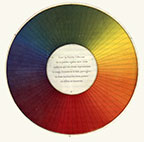Goethe and Chevreul: Simultaneous Contrast
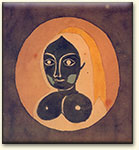
Picture of a Girl in Reverse Colors, Goethe. Enlarge this image, stare at it for half a minute, then look at a blank white wall or paper. You might see the faint image of the fair maiden at whom Goethe was gazing in a pub.
By 1800, Goethe had already identified color interaction, simultaneous contrast and complementary colors, which he logically named completing colors.
Goethe also attributes other properties to colors. He talks of color both addressing itself to the eye and the feelings – or human emotions. He lists “plus” colors, such as yellow conveying “action, light, force, warmth” and other qualities, as it excites a warm and an agreeable impression on the eye. Even today, we would not quarrel with that idea. The “minus” colors, such as blue, equate with shadow, weakness, coldness, melancholy, and so forth. (See pages on Pablo Picasso to see how this works or that on JMW Turner to see how he interprets these theories.)
Goethe illustrates an experience that led to his scientific theories on color. He drew the drawing above after gazing at a girl in a pub. He observed that when he looked away from her and looked on a wall, he saw a black face surrounded by white. The colors were inverted. These are complementary colors (white and black, red and green, and so on.) This is one of several observations that comprise his theory of colors, partially illustrated in the diagrams below.
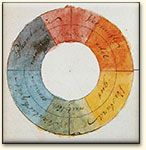
Goethe’s color circle. |
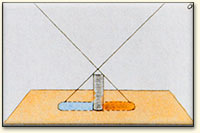
Goethe was interested in the relationship between colors and their opposites, In this case, he was interested in the apparent “color” of the shadow. |
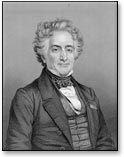
Michel Chevreul
Color interaction was first put on a sound experimental base by the French chemist Michel Chevreul (1786-1889). Chevreul was hired by the Gobelin Tapestry factory to investigate the fading of their tapestry threads.
In his 1839 book, De la Loi du Contraste Simultané des Couleurs, Chevreul shows that the fading is not fading at all, but instead due to simultaneous contrast between adjacent colored threads. Successive contrast, such as that used by the 20th century painter Bridget Riley, is the complement of simultaneous contrast but delayed in time. Both have the same neurophysiological basis of retinal fatigue.
Move the knob in the diagram below to see how Chevreul illustrated the effect of a surround on the vividness of colored circles.
